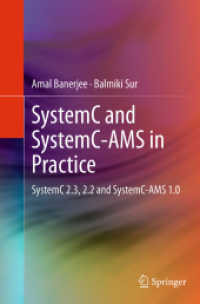- ホーム
- > 洋書
- > ドイツ書
- > Mathematics, Sciences & Technology
- > Mathematics
- > analysis
Full Description
This book provides an overview of the main approaches used to analyze the dynamics of cellular automata. Pattern formation is related to linear cellular automata, to the Bar-Yam model for the Turing pattern, and Greenberg-Hastings automata for excitable media.








